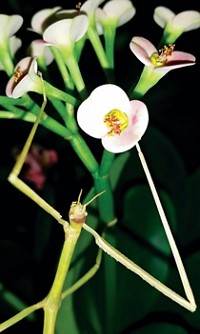Advertisement
Grab your lab coat. Let's get started
Welcome!
Welcome!
Create an account below to get 6 C&EN articles per month, receive newsletters and more - all free.
It seems this is your first time logging in online. Please enter the following information to continue.
As an ACS member you automatically get access to this site. All we need is few more details to create your reading experience.
Not you? Sign in with a different account.
Not you? Sign in with a different account.
ERROR 1
ERROR 1
ERROR 2
ERROR 2
ERROR 2
ERROR 2
ERROR 2
Password and Confirm password must match.
If you have an ACS member number, please enter it here so we can link this account to your membership. (optional)
ERROR 2
ACS values your privacy. By submitting your information, you are gaining access to C&EN and subscribing to our weekly newsletter. We use the information you provide to make your reading experience better, and we will never sell your data to third party members.
Environment
Beer yeast adapted to life with humans
The domesticated fermentative microorganism has evolved ways to reduce off-flavors and capitalize on a brew tank’s cozy, nutrient-rich environment
by Sarah Everts
September 12, 2016
| A version of this story appeared in
Volume 94, Issue 36
Long before scientists discovered the existence of microorganisms, humans domesticated yeast, coaxing the organism to make palatable beer in exchange for a reliable supply of food and a stable existence. A comprehensive genetic and phenotypic analysis of 157 Saccharomyces cerevisiae yeast strains used in fermentation industries reveals that beer-making yeasts originate from a few common ancestors that quickly evolved ways to satisfy their brewmasters (Cell 2016, DOI: 10.1016/j.cell.2016.08.020). A team led by Kevin J. Verstrepen and Steven Maere of the Flemish Institute for Biotechnology found that, compared with wild yeast, beer yeast has duplicated genes that help the organism break down maltotriose, a sugar found in beer mash. Many beer yeast strains have also evolved mutations that prevent production of 4-vinylguaiacol, an off-flavor in many beers. Meanwhile, because beer yeast is used continuously from one batch to another, it has lost the ability to reproduce sexually, the researchers found, a skill the organisms would need to survive and to adapt to stressful environments in the wild. By comparison, the team found that wine yeast still retains the ability to reproduce sexually, probably because wine making occurs only in autumn, leaving the yeast to fend for themselves during the rest of the year.





Join the conversation
Contact the reporter
Submit a Letter to the Editor for publication
Engage with us on Twitter